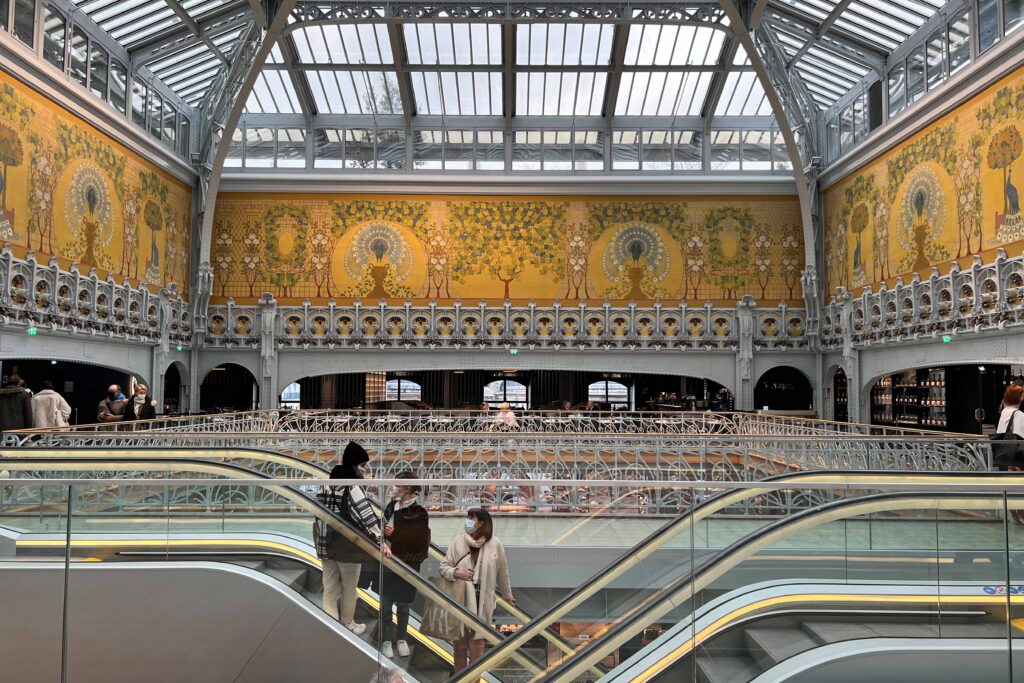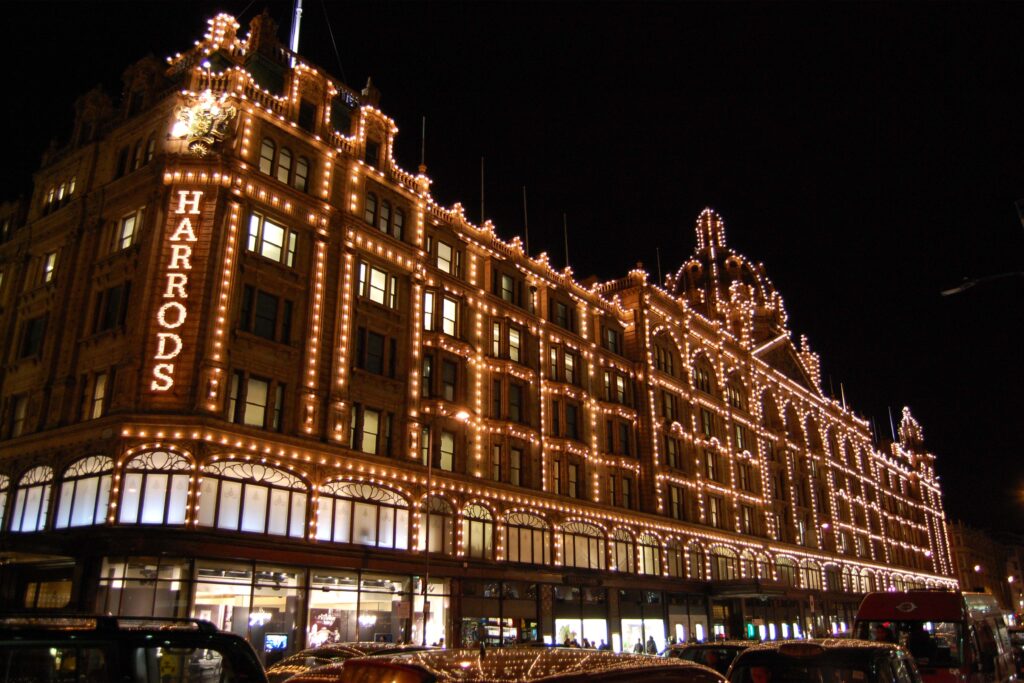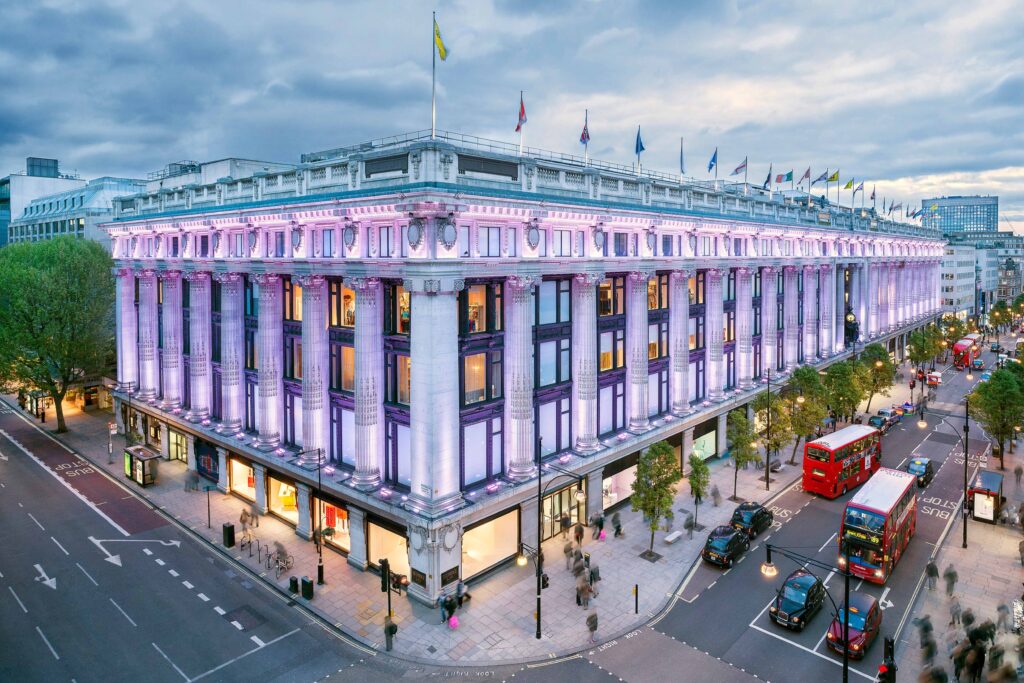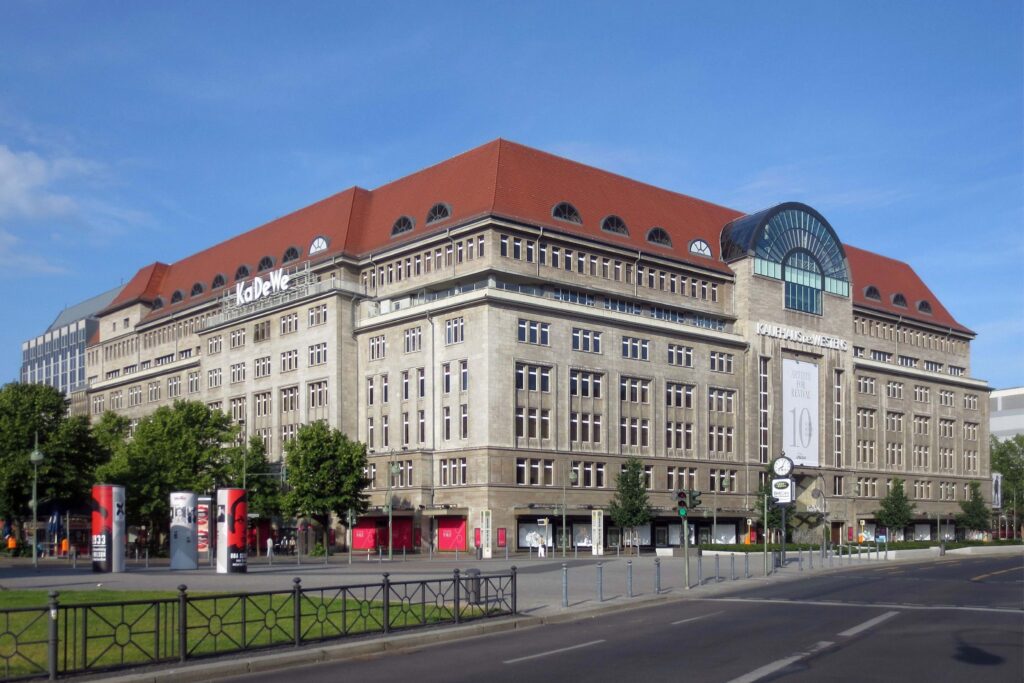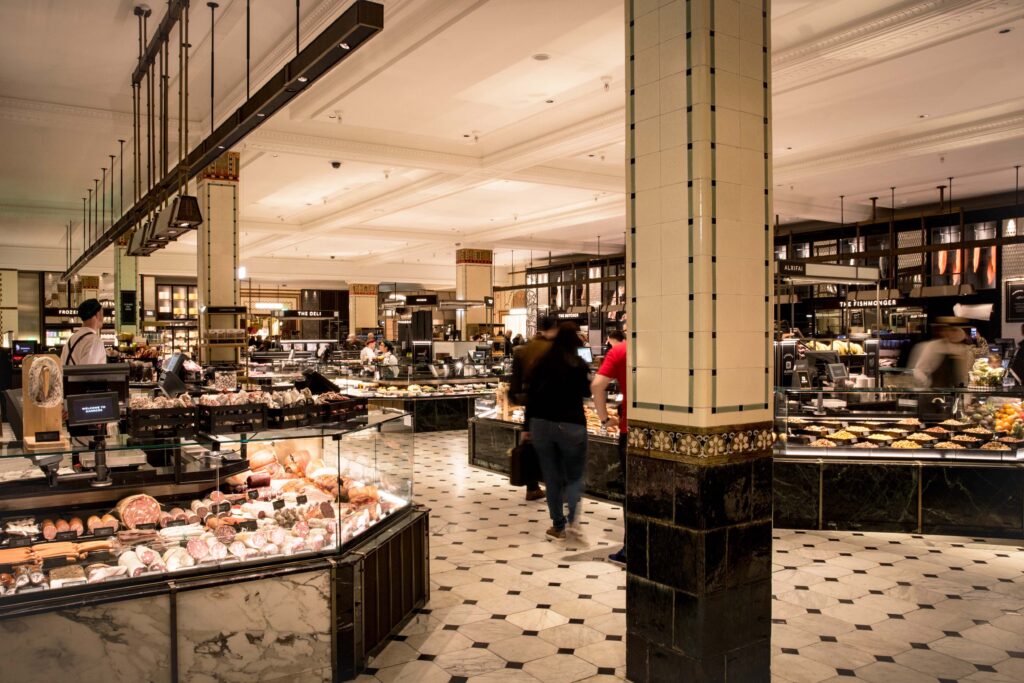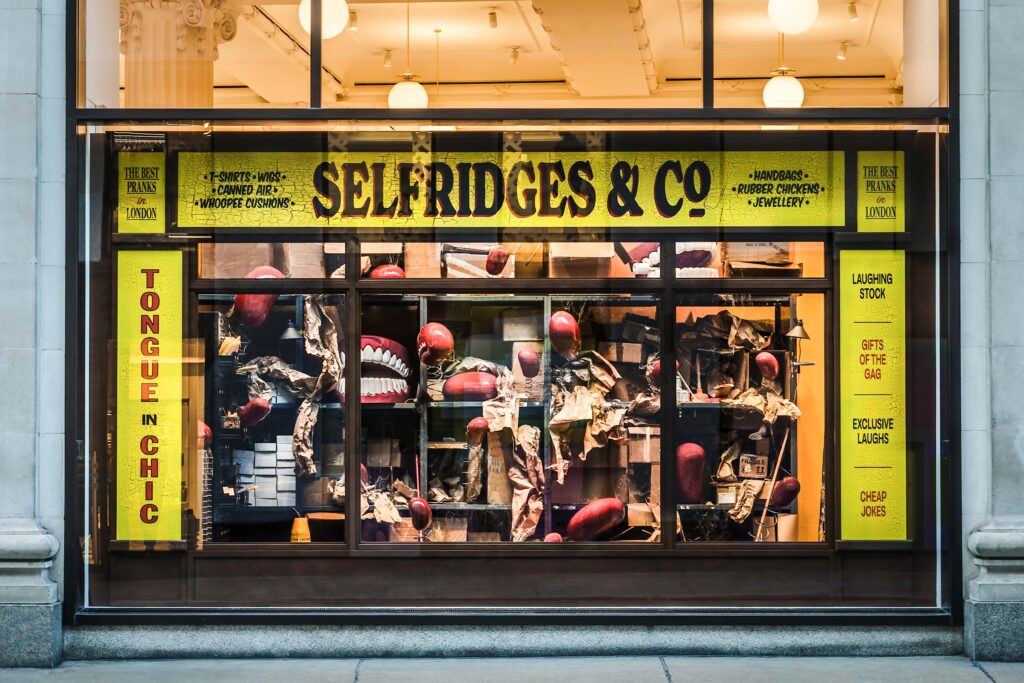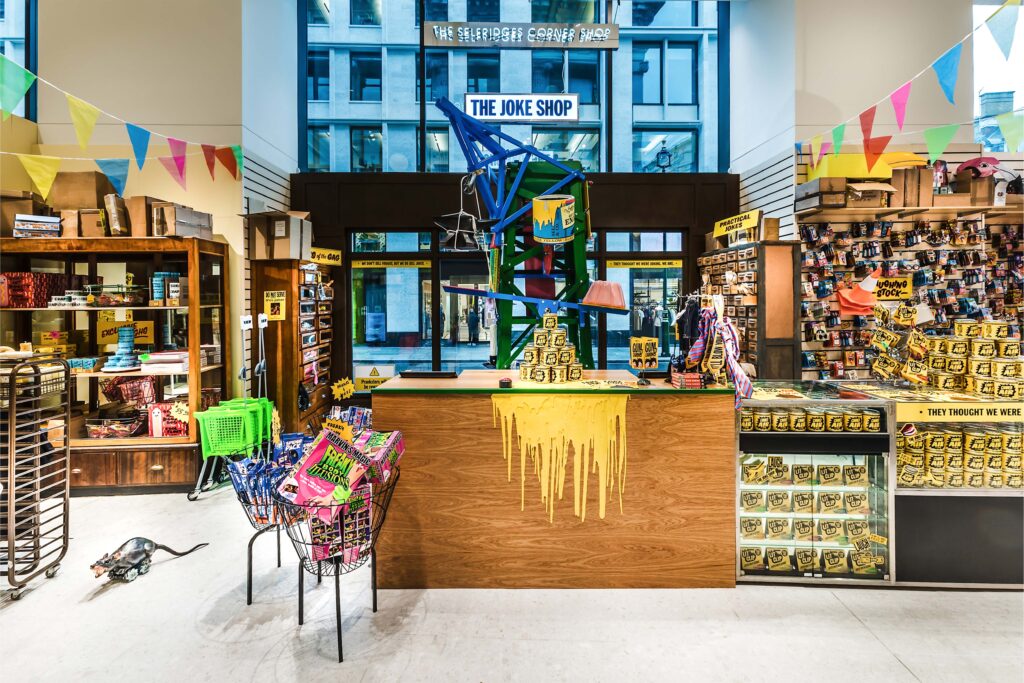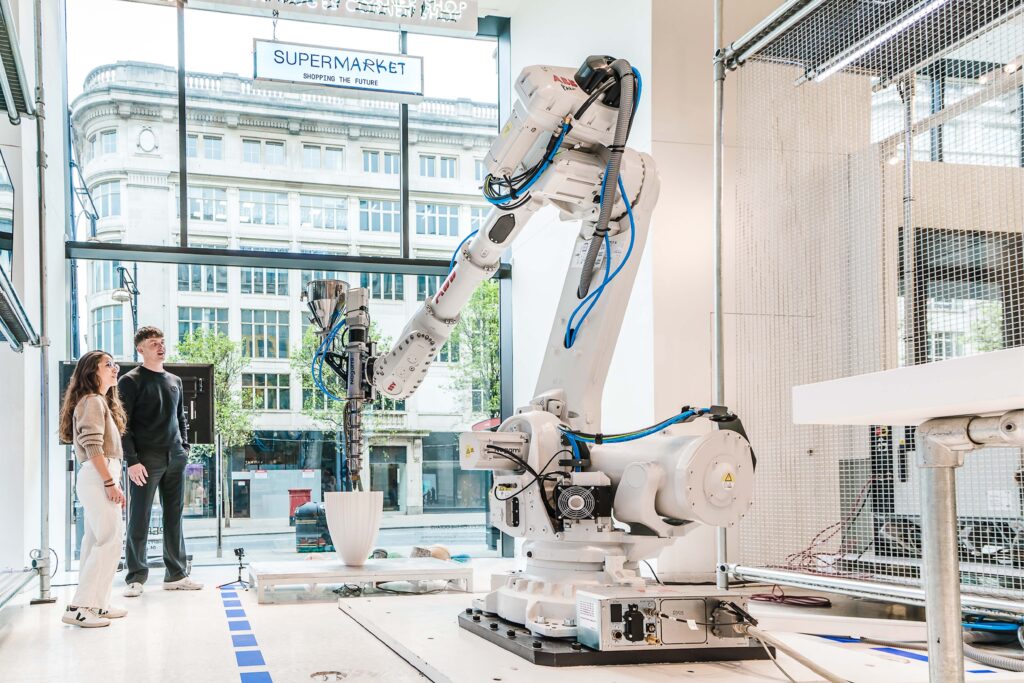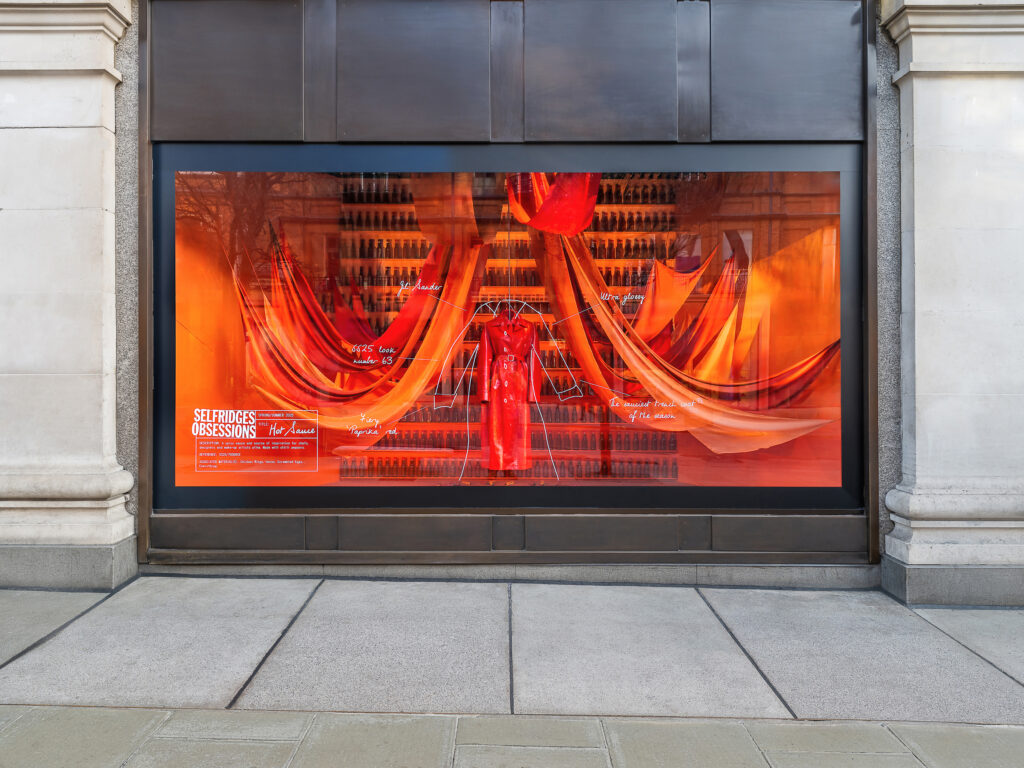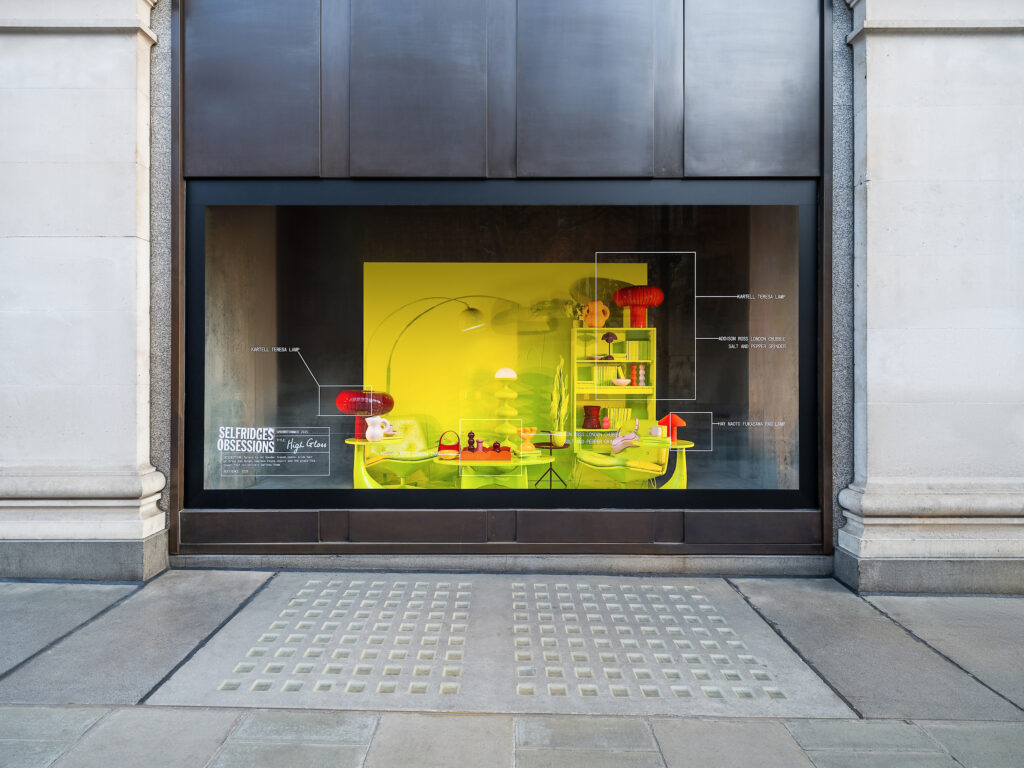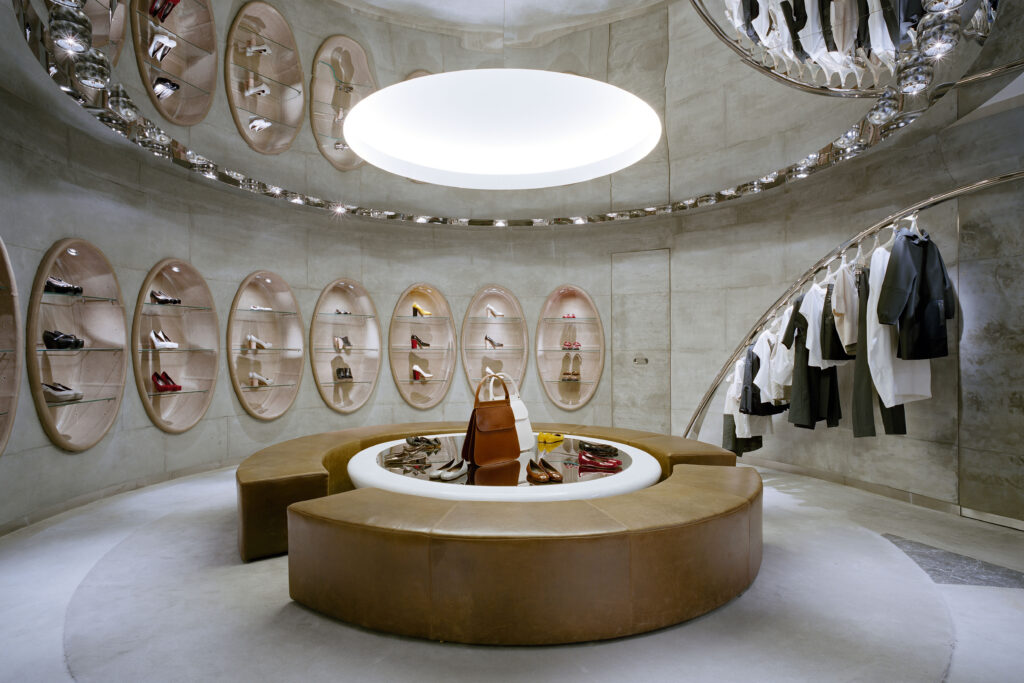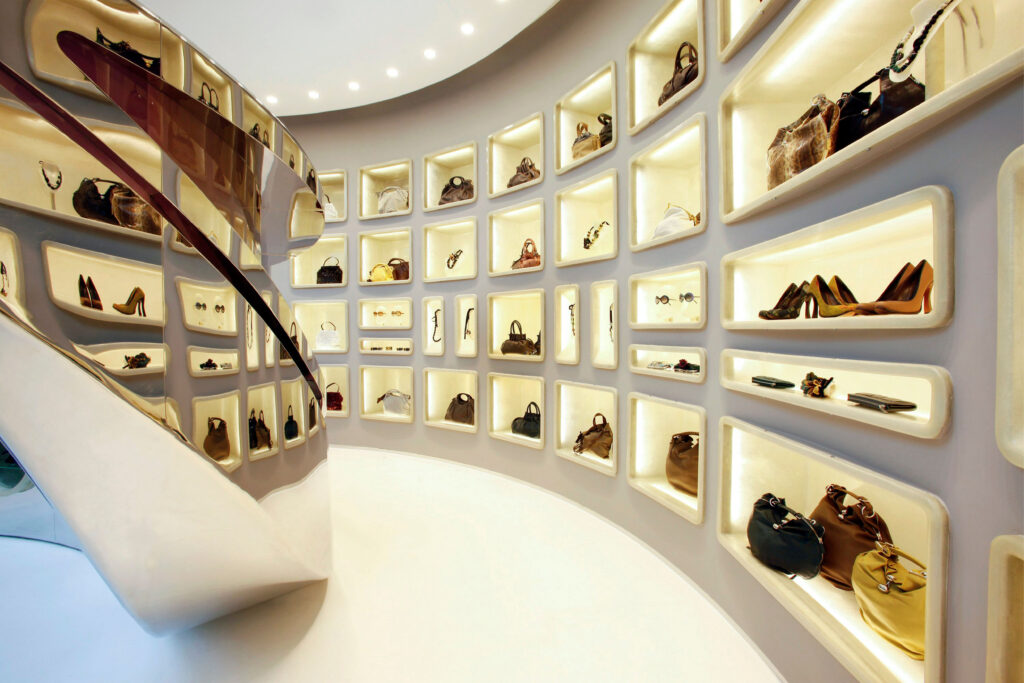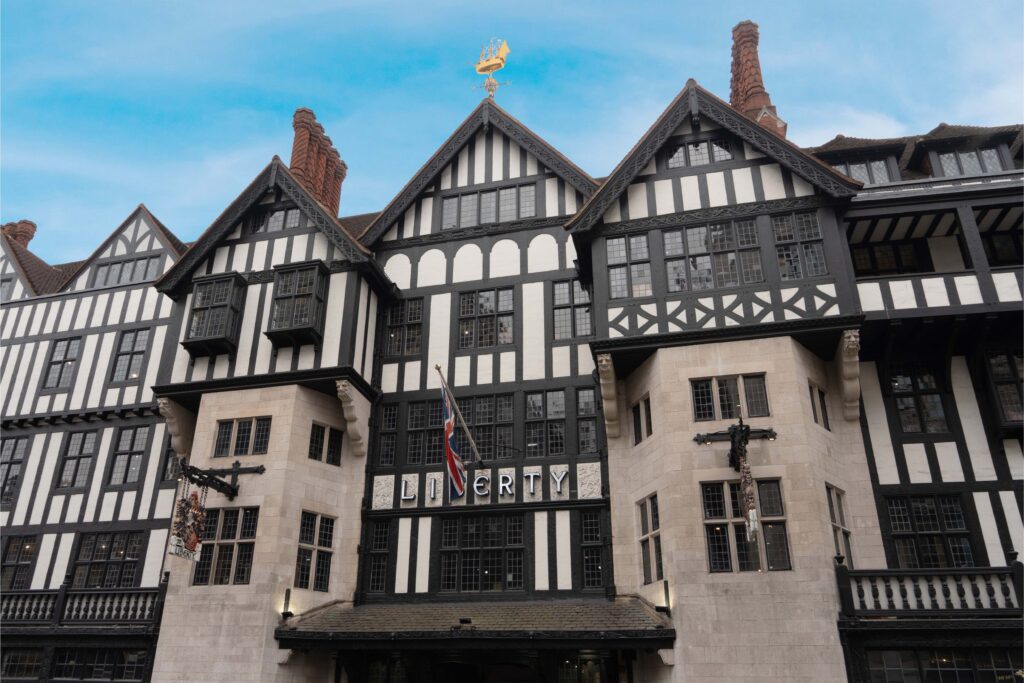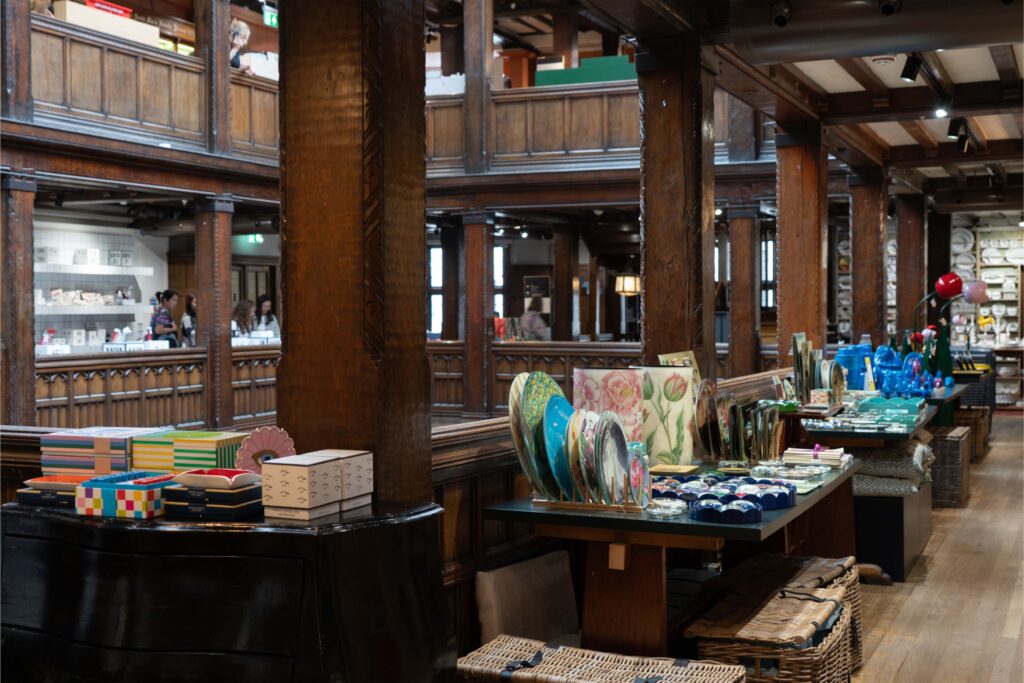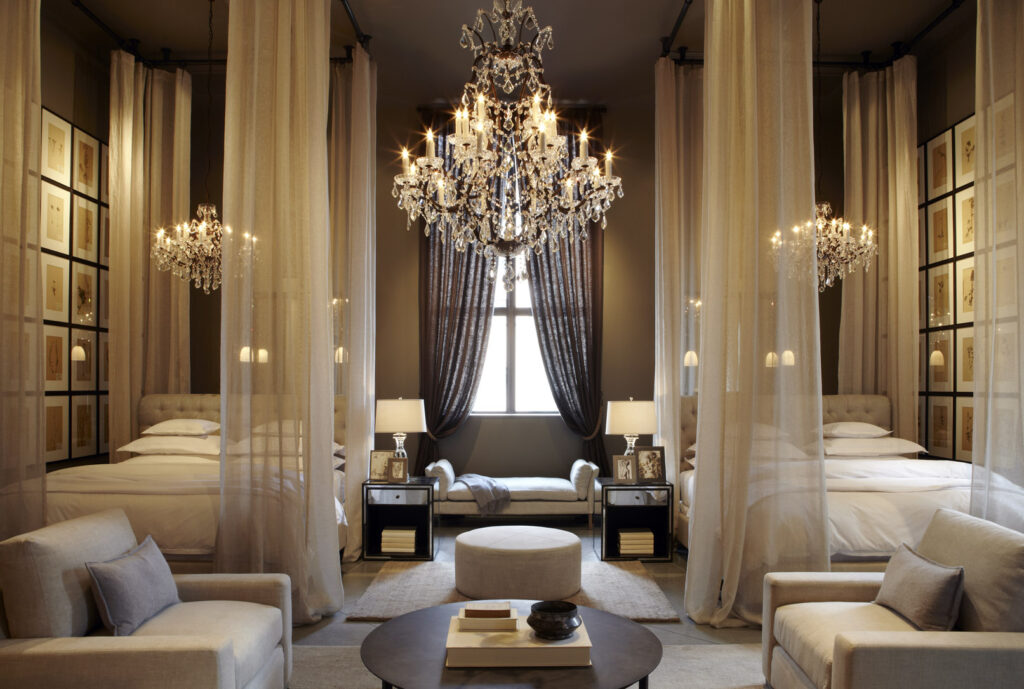Chapter 1
Timeless Inspiration
At the dawn of the 19th century, a modest drapery shop stood quietly at the corner of Rue de Sèvres and Rue du Bac in Paris. Known as Au Bon Marché, it resembled countless other stores of its time: cramped, chaotic, and transactional. But its transformation under proprietor Aristide Boucicaut would forever change the face of retail.
Boucicaut, the visionary son of a hatmaker, imagined something radically new: a destination that was more than a place to buy goods. In 1852, he reimagined Au Bon Marché as a grand emporium where shopping was not a chore but a cultural experience. This bold rethinking underscored the importance of cultivating a sense of place. With soaring ironwork galleries, expansive glass ceilings, and natural light cascading through bay windows designed by Louis-Charles Boileau and Gustave Eiffel, the store became a Parisian landmark – one that invited people to linger, not just shop.
In many ways, Le Bon Marché was among the first true examples of retail as the ‘third place’ – a space distinct from home and work where people could gather, socialise, and indulge. Women in particular found freedom here, they were able to spend entire afternoons exploring fashion, chatting with friends, and simply enjoying the surroundings. Boucicaut turned the store into a destination, not just a shop, embedding community and leisure into the retail experience.
Understanding that surprise and delight were also powerful tools, Boucicaut filled the store with novelties: seasonal displays, live entertainment, rotating collections, and elegant product presentations. The store became not just a place to purchase goods, but a place to be enchanted. Customers never quite knew what they might find, and that sense of wonder drew them back again and again.
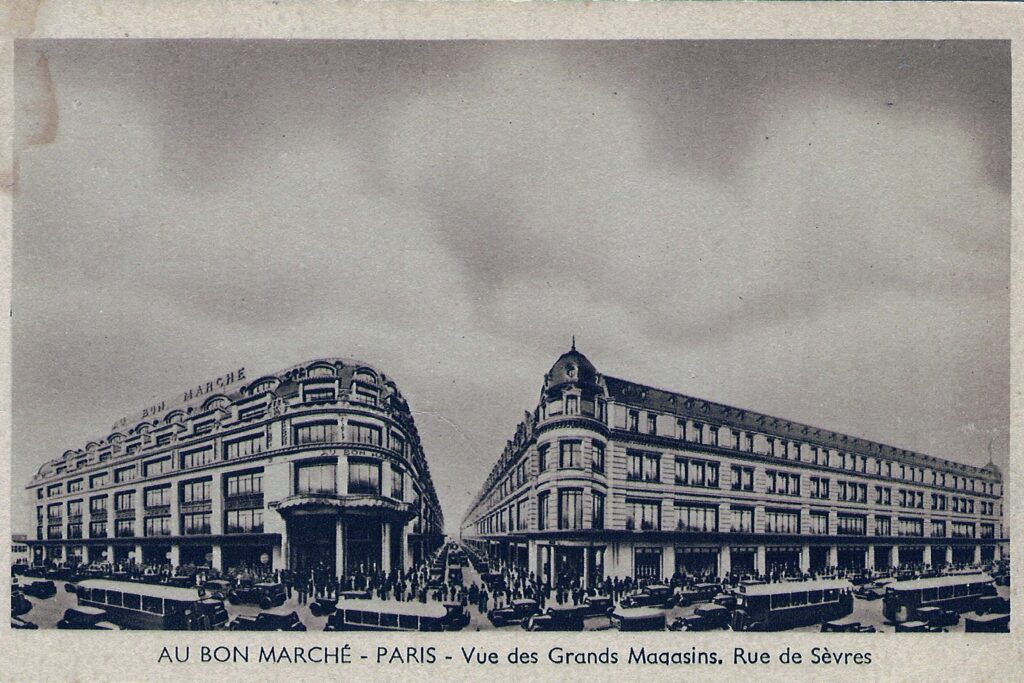
Les magasins du Bon Marché, Paris, Rue de Sèvres – Source: © Fonds Leveau; © Patrimoine Le Bon Marché Rive Gauche.
Food and beverage also played a key role – a lesson that still resonates today. Offering refreshments helped lengthen dwell time and encouraged guests to treat the store as a space of indulgence and comfort. This tactic, now common in modern concept stores, underscored food as a shortcut to success: nourish the body, and you nourish the brand experience.
Perhaps most revolutionary was Boucicaut’s approach to customer service. He abolished haggling in favour of fixed prices, welcomed all with free entry, and offered unheard-of conveniences: home delivery, product returns, and mail-order catalogues. These moves placed the customer at the heart of the experience, building a relationship based on trust, transparency, and ease, tenets still vital to any successful retail business today.
By the time of Boucicaut’s death, his wife Marguerite had taken the reins of a retail empire with 2,000 employees and an annual turnover of 72 million Francs. Au Bon Marché had become more than a store; it was a phenomenon, inspiring Émile Zola’s novel Au Bonheur des Dames and serving as the blueprint for department stores around the world.
From Le Printemps and La Samaritaine in Paris to Harrods and Selfridges in London – where lounges, libraries, and beauty halls extended the experience – department stores across Europe and beyond adopted Boucicaut’s playbook. Italy’s La Rinascente, Germany’s KaDeWe, Japan’s Takashimaya all echoed the same foundational lessons of place-making, service, hospitality, and theatricality.
Today, as retail navigates digital disruption and shifting consumer expectations, the spirit of Le Bon Marché endures. Boucicaut didn’t just sell goods, he sold an experience, a moment of magic, a reason to stay. In an era hungry for connection, inspiration, and joy, those five lessons remain not only relevant – they’re essential.
Retail’s Hybrid Model
Much like Bon Marché once positioned itself as a destination for leisure and social interaction, today’s most forward-thinking retailers are realising that brick-and-mortar stores must offer more than just products. The most astute stores are increasingly incorporating restaurants, art installations, live events, and localised services – creating environments that cannot be replicated online. This new, hybrid form of retail that isn’t just about driving transactions; it takes an individualised store approach to ensure that each location has something unique to offer.
Below, we unpack the five most critical aspects of retail that we can glean from history, propositions created by establishments like Le Bon Marché and reconfigured for modern times.
What can never be replicated online?
A tangible, awe-inspiring sense of place that can only be experienced in real life.
In today’s highly competitive retail landscape, architecture and store design play a pivotal role in shaping the customer experience and creating lasting impressions. The most successful brands are able to establish truly unique retail experiences by combining cutting edge architecture with leveraging the site of the store with local sensibilities.
In Oslo, the iconic Steen & Strøm department store has committed to creating a sense of place for visitors by building a new storefront and entrance on Karl Johans Gate. Positioned on the main thoroughfare in Norway’s capital, as part of its $36 million renovation in 2021. More recently, it underwent a €26 million capital development that saw the construction of a new beauty hall, two floors of contemporary fashion, an expanded food and beverage section and redesigned floor dedicated to technology.

“We are focused on leveraging our position as the `Store of Oslo’, committed to offering our visitor and customer authenticity, difference, a unique brand and product selection […] There is no future growth without acknowledging culture. It is the most commonly forgotten attribute, or archetype to differentiate a department store..”

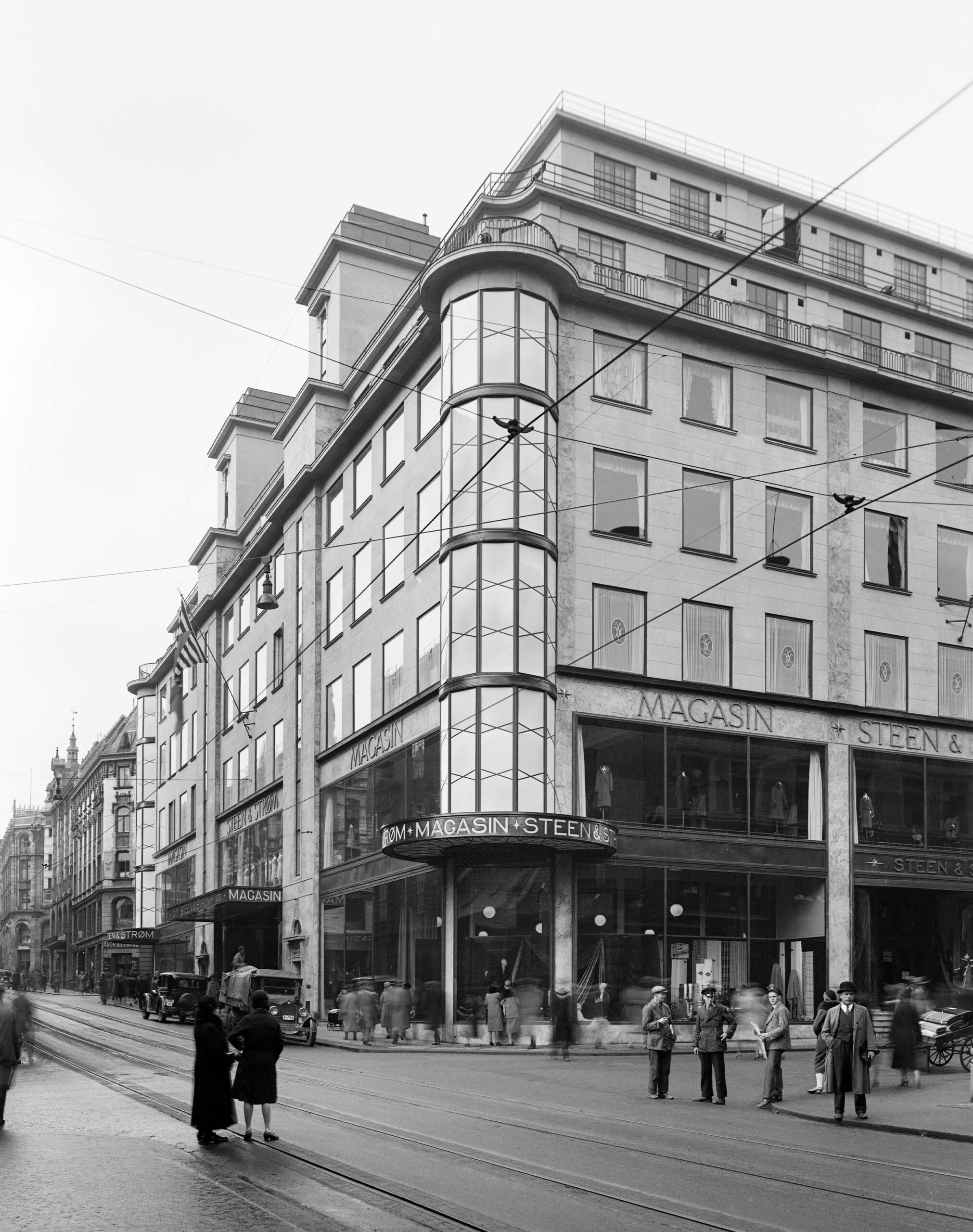
Its emphasis on store environment is coupled with a concerted effort in brand curation, ensuring a balance of international labels next to Scandinavian fashion brands like Filippa K, Tiger of Sweden, Ganni, and Holzweiler – all showcasing and promoting the Nordic lifestyle, which aids in the creation of a sense of place.
Merchandising can be its own language of design.
“Visual merchandising is an art form, whether executed through installation — based creativity or product presentation […] “Storytelling articulated through visual merchandising is often undervalued and perceived as an ‘expense.’ In our experience, these creative endeavours add both top line and bottom line performance growth.”

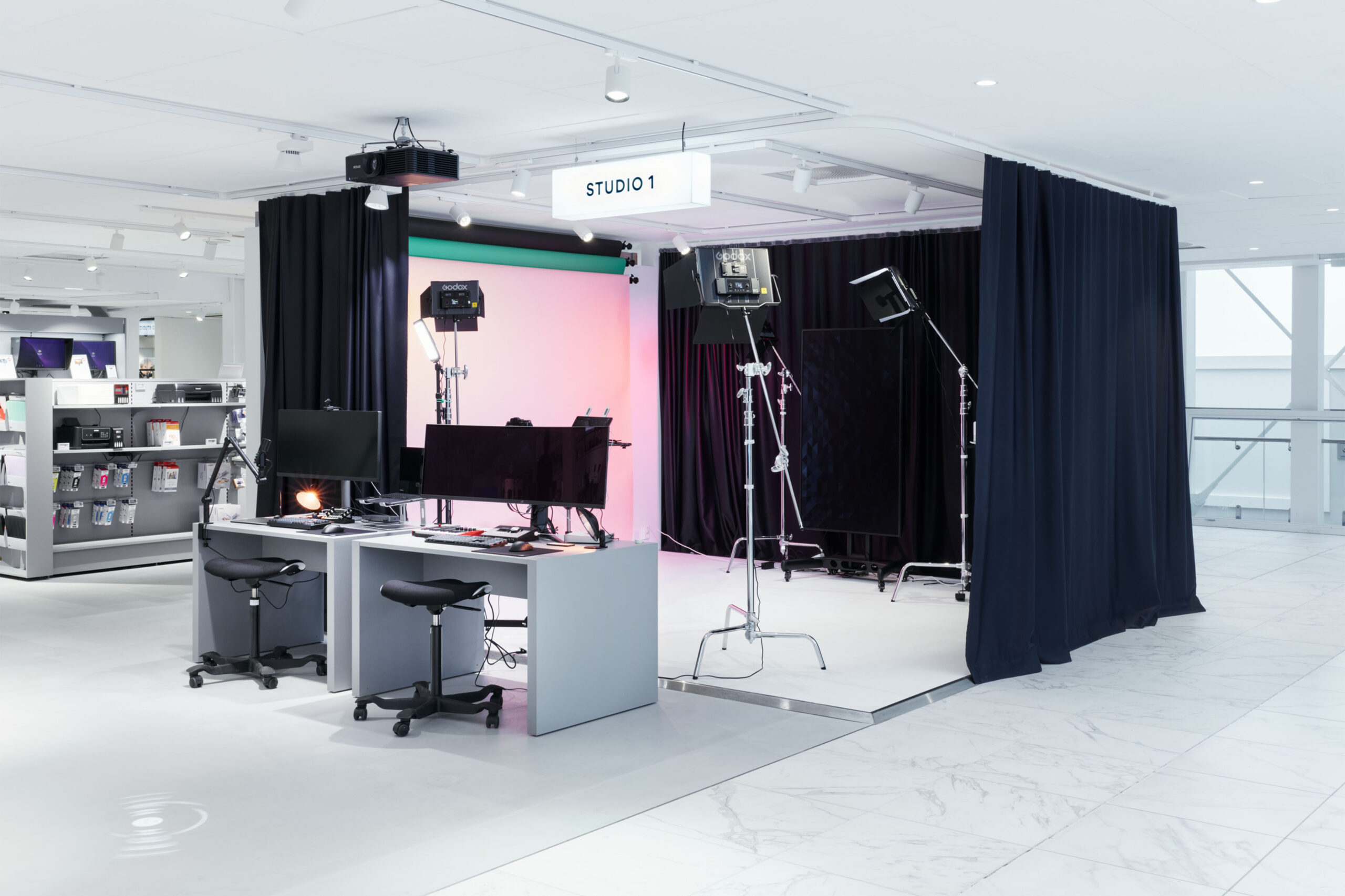
Another exemplary case for the importance of sense of place is the Starbucks’ special Reserve Roasteries around the world. Its Shanghai outpost, for instance, is a sprawling coffee wonderland deeply rooted in its locality, featuring design elements inspired by traditional Chinese tea houses, while the ceiling’s handcrafted wooden petals mimic the motion of coffee roasting.
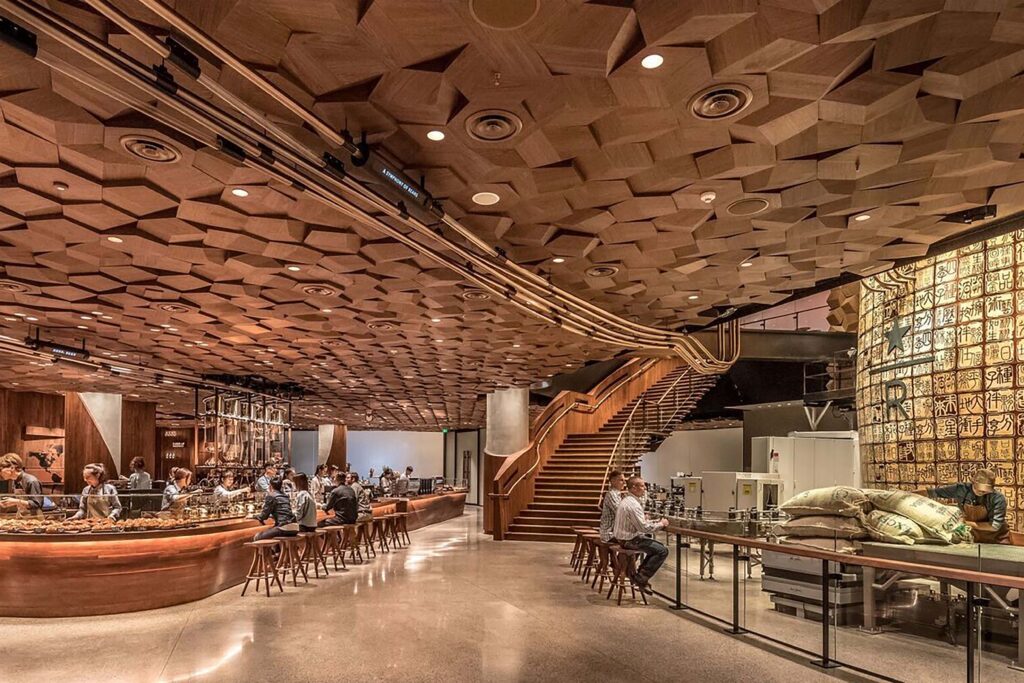
The KaDeWe (Kaufhaus des Westens) department store in Berlin, meanwhile, has undergone a transformative renovation by design firm OMA, reimagining the traditional retail experience through innovative architecture and design.
To address the challenges of navigating its vast 60,000-square-meter space, OMA introduced a master plan that divides the store into four distinct “quadrants,” each with its own architectural identity and accessed from different street entrances. These quadrants are interconnected by “primary streets,” creating an internal urban grid that enhances orientation and movement within the store.
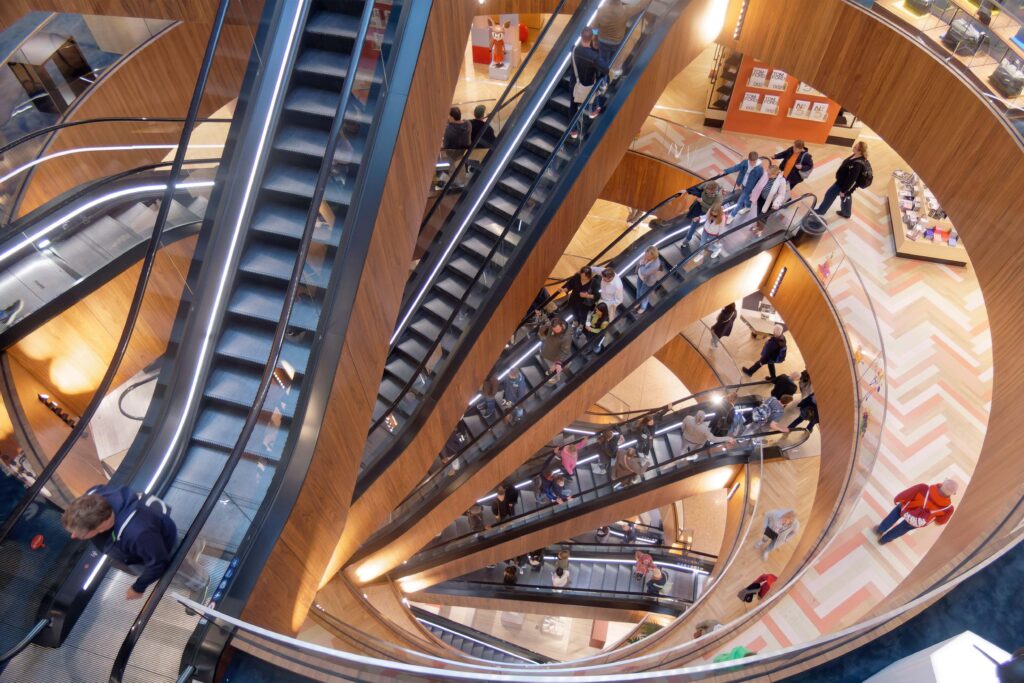
Another notable feature of the renovation, the first stage of which was unveiled in 2021, is the reintroduction of natural light. OMA reopened previously sealed windows and balconies, allowing daylight to permeate the interior spaces. The original vaulted rooftop has been transformed into a glass volume, enabling visitors to view the sky from the ground floor upwards, thus reestablishing a connection between the interior and the external environment. By integrating elements of urban planning and emphasising natural light and spatial clarity, KaDeWe reaffirms its status as a world-class retail destination.
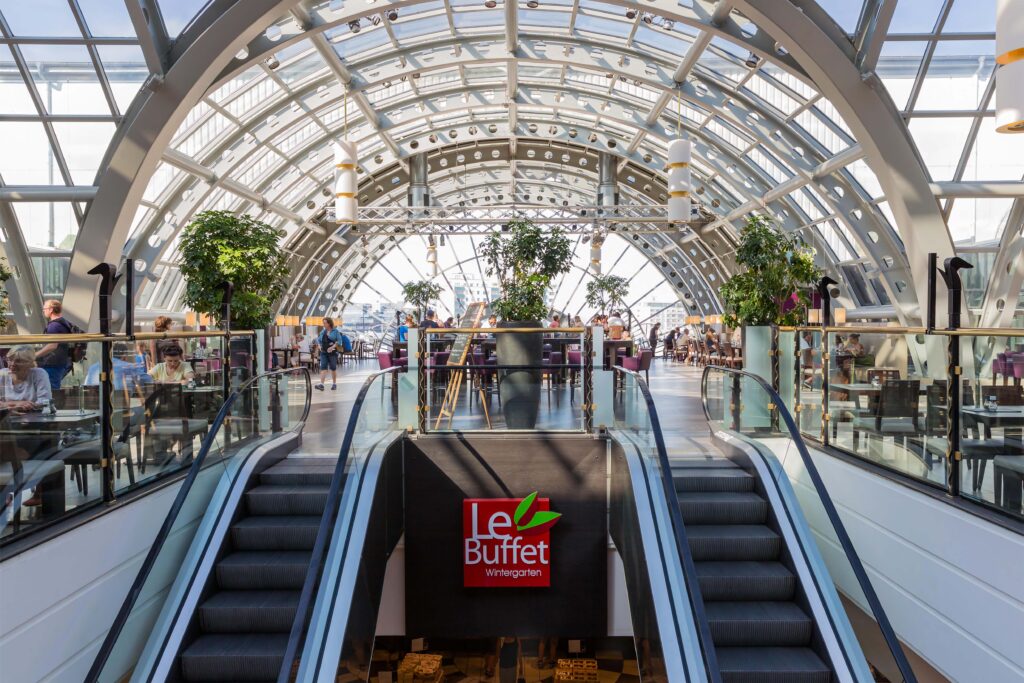
Today, shopping destinations cannot be regarded by their developers as merely a place to shop. Malls and department stores must think of themselves as a ‘Third Place,’ or a social space outside of home and work, where people can gather, socialise, and build relationships in an informal and casual environment. Physical retail can serve as a powerful antidote to the global loneliness epidemic, for instance. A Gallup survey revealed that over one in five people worldwide felt lonely “a lot of the day yesterday.”
In response to this pervasive sense of isolation, brick-and-mortar retail spaces are evolving to serve as hubs for social interaction. The most perceptive retailers are recognising the importance of creating environments that foster community engagement.
As the world grapples with rising feelings of loneliness, the role of physical retail spaces in providing opportunities for social connection has become increasingly significant. In a growingly isolated world, social experience itself has become a luxury. The brands that will thrive are those that recognise retail as an experience rather than a transaction.
Le Bon Marché, one of the world’s first true department stores, has long understood a truth many retailers are only now rediscovering: brick-and-mortar retail is far more than a place of transaction – it is a place of transformation. A space where culture, community, and commerce intersect, and where shopping becomes social theatre.

“Stores have become bigger to accommodate event spaces, new categories, breakout areas and the like […] Whatever means to have the consumer spend more time getting to know the story of a brand is a good idea it seems.”
Today, Le Bon Marché continues to embody this idea through programming that redefines what a retail experience can be. Its atrium – once a marvel of 19th-century ironwork – now serves as a dynamic stage for immersive installations, contemporary art, and ever-evolving pop-ups. These activations do more than create “Instagrammable moments”; they infuse the store with cultural currency and emotional resonance.
In 2016, the store exhibited ‘Er Xi’ by Ai Weiwei, filling the atrium with mythical creatures crafted from bamboo and papier de soie – a poetic and politically charged collaboration with one of the world’s most controversial artists. In 2018, MANA and Scott Oster’s ‘Le Cube’ brought skateboarding inside a translucent, floating structure in the heart of the store, turning shopping into an urban performance. Playful interventions like Leandro Erlich’s optical illusions added a whimsical twist to the iconic escalators, reinforcing that cultural engagement doesn’t always require spectacle – just imagination.
These moments build loyalty not by pushing product, but by creating memory. That same philosophy can be seen in the ‘2024 Paper People’ installation by illustrator Jean Jullien and the Paris pop-up, which celebrated the Parisian lifestyle through niche fashion brands, design objects, cafés, and culinary activations – positioning the store as a cultural curator for the city itself.


This retail-as-cultural-platform mindset is echoed in a broader trend among luxury brands. Dior’s Galerie Dior in Paris is a permanent museum-like space that traces the house’s creative legacy through immersive exhibition design, elevating brand storytelling to an art form. Similarly, Gucci Cosmos – a traveling showcase that’s part-boutique, part-archive, part-art installation – brings Gucci’s history to life in a multisensory way that’s both educational and emotionally charged.
Together, these examples signal a new era of brick-and-mortar: one where the store becomes a stage, the shopper a participant, and culture the real currency. In this model, retail is not just a destination – it’s a shared experience that invites return, reflection, and connection.

180 Studios, London, GUCCI COSMOS Exhibition Video – Source: Sybarite.
If brick-and-mortar retail is to thrive in the experience economy, food and beverage (F&B) is no longer a footnote – it’s a front-row act. Across department stores and shopping malls, F&B has grown from an amenity into a critical revenue driver and cultural magnet. Real estate data suggests that F&B’s average share of space in a shopping centre has more than doubled in the last decade in certain markets, and can reach up to 20 percent of total retail leasing in a mall. But success in this space is about more than square footage. It’s about sensory curation, storytelling, and strategic detail.
Mall landlord Brookfield Properties told CNBC late last year, for instance, that in some of its shopping centres, F&B accounts for up to 30 percent of total leasing.
Harrods offers perhaps the clearest example of how food can define – and elevate – a retail brand. Originally founded as a humble grocer and tea merchant in Stepney in the 1830s, Harrods has turned that heritage into a cornerstone of its identity. Today, its food halls are not only retail spaces but theatrical environments. Under Art Deco and Art Nouveau ceilings, ingredients are arranged like fine jewellery. Culinary preparation is on full display, transforming shopping into spectacle.
“Harrods started life as a food store and we have always had this as part of our DNA […] Over the past year, Harrods has continued to evolve our value proposition and today is an immersive lifestyle destination, seamlessly blending our rich heritage with modern innovation to meet evolving consumer behaviours.”
“This commitment to excellence, innovation, and experiential dining ensures that Harrods is not just a place to shop but a true luxury lifestyle destination where food and fashion meet in a world of exceptional taste.”


The broader industry trend reflects this thinking: food is no longer just sustenance; it’s performance. Grand food halls evoke emotional responses through Belle Époque architecture, immersive lighting, and open kitchens that showcase craft and provenance. In Japan, the famed depachika (department store food basements) of retailers like Isetan Shinjuku have long celebrated this model. There, food fairs known as bussanten constantly rotate seasonal and regional delicacies – turning everyday shopping into culinary education. The experience extends vertically: customers are encouraged to take their purchases to the rooftop garden, where the act of eating becomes a leisurely, scenic ritual. This strategic placement of F&B experiences is a smart use of vertical space and a subtle cue for movement through multi-level environments.
Meanwhile, in the Mall of the Emirates, the Fashion Dome exemplifies the power of F&B when it merges with architecture. Here, vaulted ceilings, dramatic lighting, and high-design eateries turn dining into an Instagrammable moment – a feast for both palate and lens. In such environments, F&B transcends utility. It becomes emotional, visual, and deeply shareable.
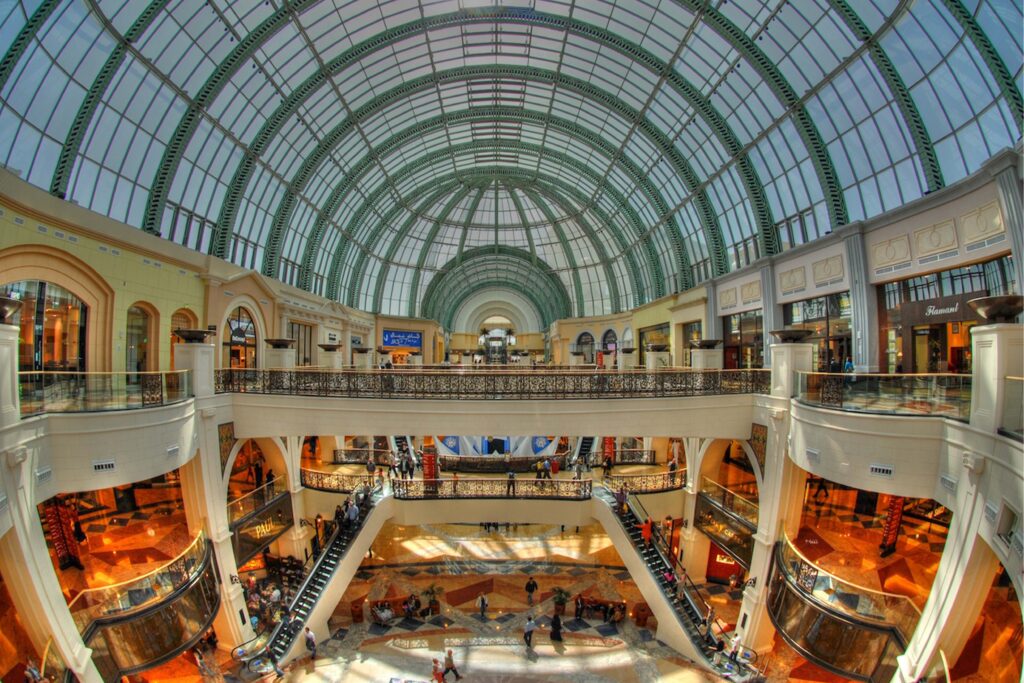
In a competitive landscape, food and beverage offer retailers a shortcut to relevance – but not a shortcut to quality. Only when executed with craft, care, and creativity, F&B can transform retail environments into destinations. It draws crowds, slows them down, deepens engagement, and crucially gives them a reason to return.
Amid all the innovation in retail – AI, personalisation, omnichannel – one thing remains constant: the most successful stores deliver great service. It’s the foundational value proposition of the department store, dating back to its origins in the 19th century: help consumers find what they’re looking for and inspire them to discover what they didn’t know they needed.
Service today is not just about politeness at the counter. It’s about operational excellence and emotional intelligence, enabled by both people and systems. Key service metrics driving satisfaction include staff knowledge and attentiveness, checkout efficiency, cleanliness and comfort, and ease of arrival, which includes parking, wayfinding and welcoming entrances.
According to PwC, for instance, more than 70 percent of global customers say they desire human interaction in the shopping experience.
Leading department stores are re-investing in service as a differentiator. Printemps’ new NYC flagship features personal shopping suites and concierge-style services, blending luxury fashion with a hospitality-inspired approach. In Canada, Holt Renfrew offers valet service, beauty spas, and stylists that create tailored customer journeys – supported by staff trained in both fashion and service etiquette.

The Shoppes at Marina Bay Sands in Singapore exemplify how luxury retail in Asia integrates service and tech. Guests can access multilingual assistance, reserve dining and shopping experiences through one digital interface, and even have luxury purchases delivered to their hotel rooms, blending retail and hospitality into a seamless whole.
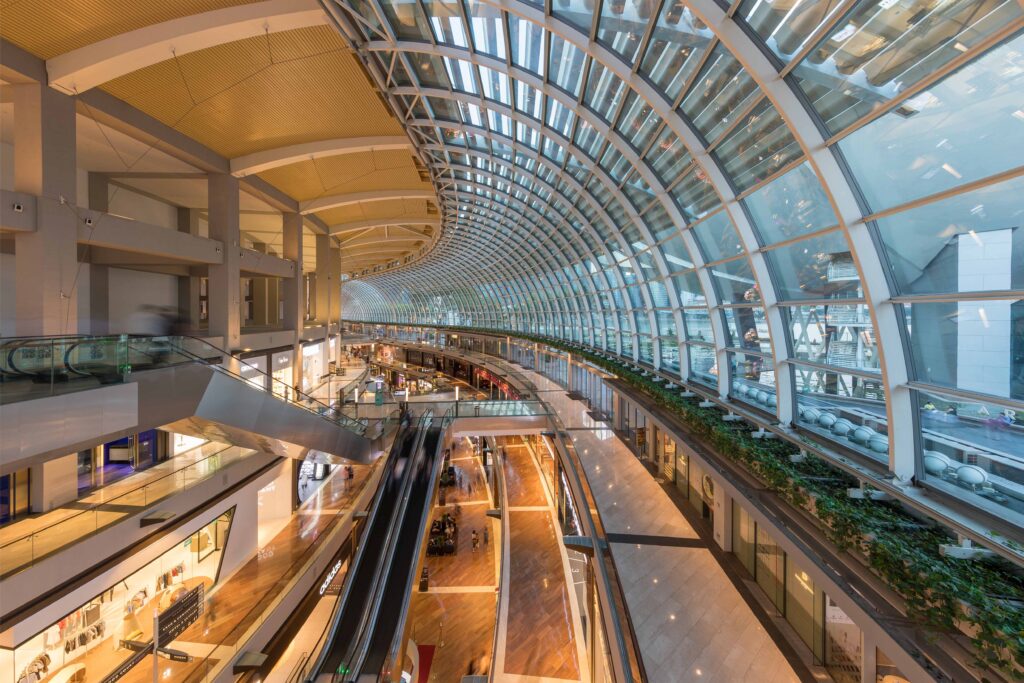
This crossover is no coincidence. Luxury hospitality brands like LVMH’s Belmond offer a model worth studying. Known for intuitive, anticipatory service, Belmond emphasises consistency, personalisation, and human warmth – all elements increasingly expected in high-end retail environments. As LVMH blurs the lines between fashion, hotels, and experience, it’s clear that hospitality isn’t a separate industry – it’s a standard.
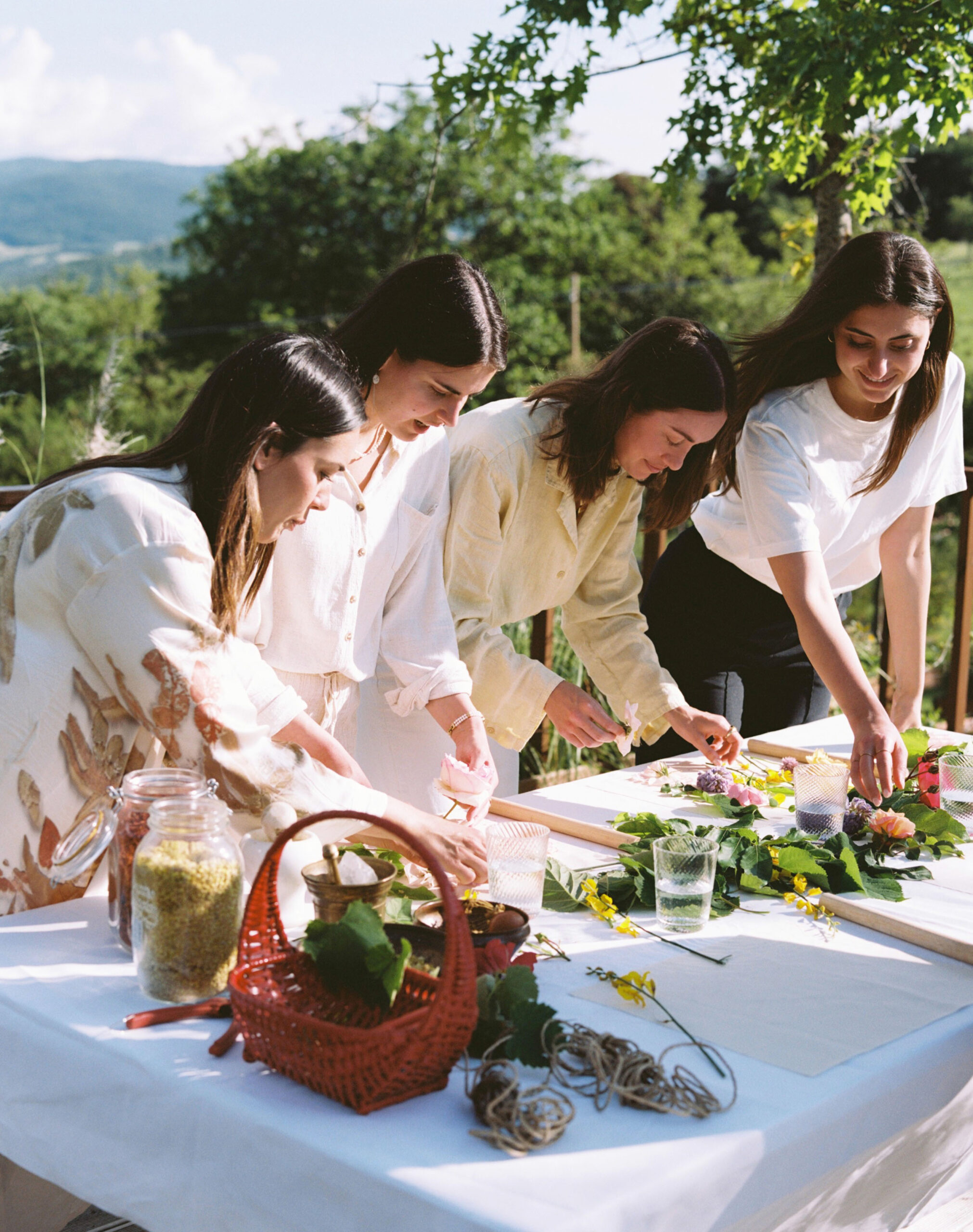

The return to service is more than nostalgic – it’s strategic. In a competitive market, where digital convenience is only a swipe away, physical retail must deliver more than products. It must deliver care, craft, and consistency. Retailers who excel here don’t just drive sales – they build loyalty, advocacy, and long-term brand equity.
The true competitive edge of physical retail lies in its ability to create moments of wonder. This idea – that shopping should spark joy, provoke curiosity, and delight the senses – is not new. It was embedded in the DNA of the original department store visionaries like Harry Gordon Selfridge, who famously declared, “Shopping should be fun.” But today, this philosophy is being reimagined for a new generation, through bold activations, immersive storytelling, and collaborations that blur the lines between commerce and culture.

Selfridges has long championed the role of surprise in driving emotional connection and foot traffic. Its Corner Shop – strategically placed at the nexus of Oxford Street and Duke Street – serves as a high-visibility playground for retail experimentation. These activations aren’t just pop-ups; they’re statements. From the Joke Shop, which offered a nostalgic yet irreverent take on British humour, to Supermarket, a vision of a “shop of the future” where luxury meets sustainability, Selfridges turns temporary retail into a spectacle of ideas.
Most recently, Obsession 2025 and the new Selfridges Lounge further blur the boundaries between culture, hospitality, and shopping – proving that delight can be designed into every square metre of a store.
The key is contrast: unexpected juxtapositions that create emotional peaks. This ethos drives many of the most memorable brand collaborations today. Take Louis Vuitton’s 2023 collaboration with Yayoi Kusama – a radical evolution of their original 2012 partnership. Whereas the first collection focused on applying Kusama’s iconic polka dots to products, the second created an entire universe. Store façades from Harrods to Louis Vuitton Paris were taken over by dot-covered installations and surreal sculptures of Kusama herself. From global window displays to hospitality extensions like Harrods’ Polka Dot Patisserie, the campaign transcended traditional retail, becoming an experiential ecosystem that invited participation, not just purchase.

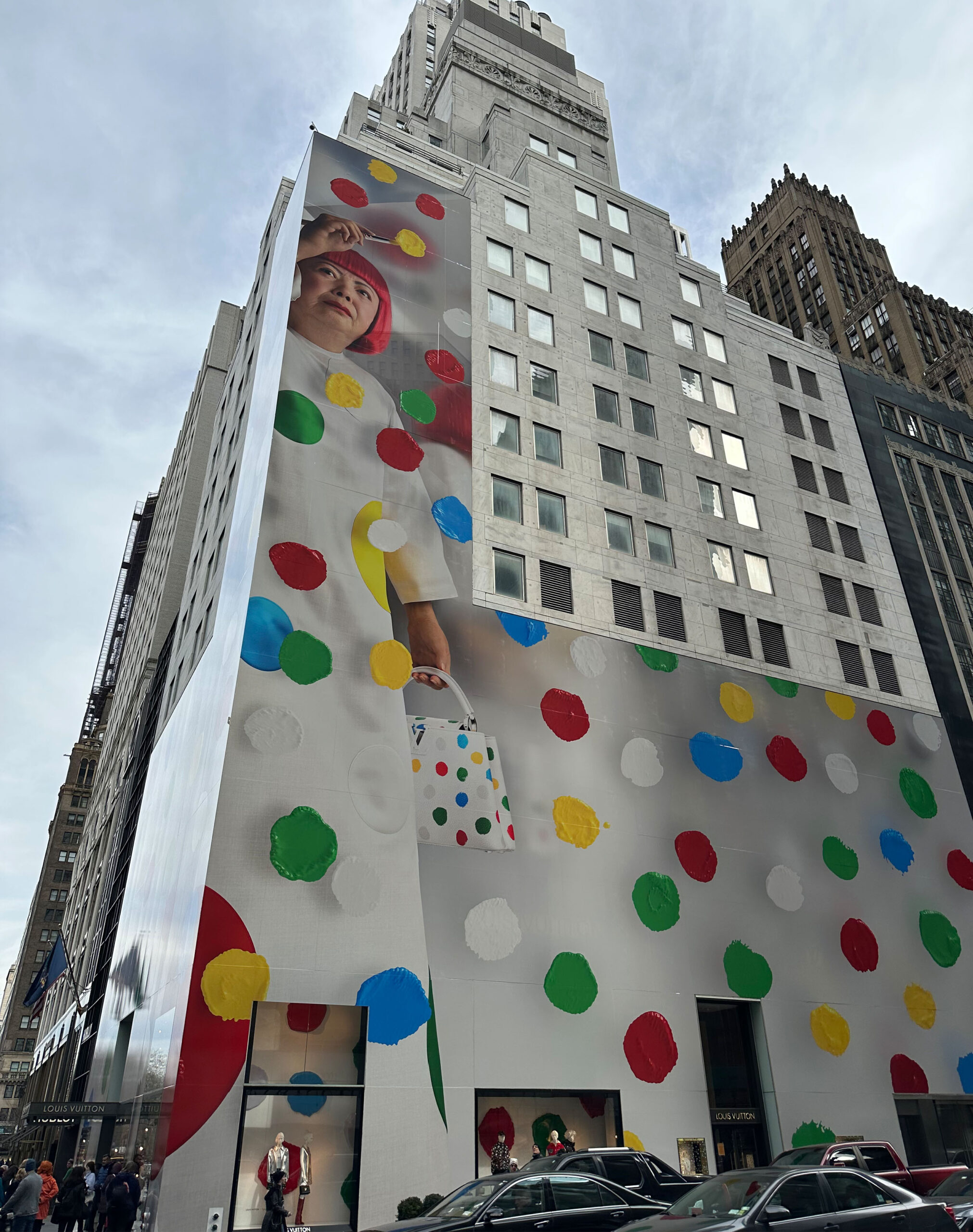
Louis Vuitton, Harrods, London, Yayoi Kusama – Source: Harrods.
The success of Kusama x Louis Vuitton lies not only in aesthetics, but in its scale and theatre. These are not pop-ups: They are retail destinations. By combining sculptural art, digital campaigns, and curated environments, the collaboration demonstrates how physical space can become an extension of an artist’s imagination, while also amplifying brand storytelling.
In the same spirit, Marni’s global expansion, led by Sybarite from 2002, transformed brand expression into a travelling exhibition. Each site-specific activation reflects its locale while reinforcing Marni’s eclectic identity – a nomadic retail philosophy that invites global consumers into a playful and unexpected journey through the brand’s universe. Through understanding that delight is strategic, these activations are not just about novelty – they’re about crafting peak moments that consumers remember, photograph, and share.
“Simon and I consciously rejected a cookie-cutter approach to designing all Marni stores […] Our ambition was for each space to express its own idiosyncrasies, shaped by the unique spirit of the city it was in. At the same time, we wanted each store to be instantly recognisable — to feel unmistakably Marni — so you would not have to read the name above the door. This recognisability came through a shared signature DNA, most notably in the organic stainless steel rails that seamlessly transition into flat surfaces for displaying accessories. Beyond that, every store was truly bespoke — London is entirely different from Aoyama, Las Vegas, or Milan — each one was responding to its environment, and each store was hugely successful.”
“The idea is that if you are shopping in Milan’s Montenapoleone or Shanghai’s Xintiandi district, you should be able to recognise essential codes of a brand but hopefully products will differ somewhat, art pieces will be unique, the layout, services must be specific to that given store […] In other words, we have moved from a copy-and-paste approach to what you might call ‘mass customisation’ of retail.”
Liberating Retail
The stores that endure are those that inspire. They are not merely points of transaction but cultural landmarks: places where history, creativity, and community converge. Such destinations remind us that retail at its best is about discovery, theatre, and emotional connection — experiences that root themselves in memory and meaning long after the purchase has been made.
Few stores embody this spirit more vividly than Liberty London. Founded in 1875 by Arthur Lasenby Liberty as an “emporium for discovery,” Liberty quickly became a crucible for the Arts & Crafts and Art Nouveau movements, championing craftsmanship and design that defined an era. Its current home, built in the 1920s from the timbers of two historic ships, remains one of London’s most distinctive landmarks: a Tudor — revival icon that is inseparable from the city’s cultural fabric.
What makes Liberty truly timeless is its ability to balance rootedness with continual renewal. The retailer is defying the wider multibrand slowdown, with sales and profits rising sharply above pre-pandemic levels, proving that heritage is a springboard, not an anchor. Recent initiatives — from immersive Prada and Loewe edits to the 150th — anniversary quilt stitched from over a thousand customer contributions — show a commitment to theatre and reinvention. Even its latest chapter, Topshop at Liberty — coined the “homecoming of an icon” — reimagines a high-street legend within its walls. Emblematic of Liberty’s prowess with perfectly balancing nostalgia and relevance, this alliance of two iconic British names provides both authenticity and newness.
Liberty’s story illustrates a larger truth. Timeless retail is not about preservation but about creating places that continually liberate experience from the ordinary. In a world awash with sameness, its example points to a future where meaning, identity, and resonance matter most.
In the following thought-piece, Kevin Roche, Non-Executive Director at Sybarite, Founder at Roche Design Strategy and longtime advisor to the world’s leading luxury houses, expands on this theme, arguing that survival depends on escaping what he calls “Retail Boredom” and rediscovering how to make stores into destinations that matter.
An Antidote to Retail Boredom
By Kevin Roche, Non-Executive Director, Sybarite; Founder, Kevin Roche Design Strategy
After over five decades in the luxury industry, I have observed what has been a gradual erosion of traditional retail formats toward a holistic integration of categories, resulting in the convergence of retailing, hospitality, entertainment, food & beverage, cultural, and sporting venues into the mixing of commercial and social experiences.
In other words, the lines that once divided the way we live, work, shop, relax, and entertain ourselves are now seamless.
Investing in innovation, newness, or potentially breakthrough experience can be intimidating and even risky. It has become abundantly clear that managing old-world traditional retail formats through operational efficiencies and expense management is no longer enough to survive.
In their quest for scale, many legacy retail brands have transitioned from curators of wonderment to experts in expansion and operational effectiveness. Public listing, expansion mandates, and cost-cutting initiatives can propel these operators into performance engines, but that’s not enough to compete against new retail formats.
At its best, the retailing industry has always been about aspiration, discovery, and establishing long-lasting emotional connections.
When hard metrics become the industry bible, and the soft metrics become subordinate or disappear altogether, the soul of the store brand withers.
In a world where most retailers sell merchandise that few need, and most everything is available at our fingertips 24/7, consumers are seeking reasons to visit, spend time, and shop in the built environment. Delivering endless aisles of sameness is not just uninspiring — it is also discouraging to a customer with options and choices.
The most resonant retail, hospitality, and entertainment destinations today are those that curate and cultivate a balance between the assortment, the execution and most importantly the context of the place.
In Hollywood, California, you can experience the globally famous Hollywood Bowl, a 20,000- seat amphitheatre. It offers a pre-show experience that alone lasts two to three hours, featuring shopping, dining, and socialising, followed by the show itself. It is a socially relevant retail experience, capturing a share of time and, therefore, a share of the wallet.

This principle translates seamlessly into retail. Starbucks’ Reserve Roasteries are not formulaic rollouts. Each location is deeply embedded in local identity — whether through design, product, or storytelling. It’s a reinvention of global branding, where destinations speak to the world yet feel unmistakably of their place.

The remaining traditional department stores must ask, ‘What business are we in any way, and why will I matter in five years?’ This is an industry that can discover insights from outside this sector, where these non-essential retailers may want to explore a network of one-of-a-kind destinations uniquely merchandised, designed, and operated with a heavy dose of local wonder. The hospitality industry figured this out more than 20 years ago.
As we know, many department stores — but not all — have lost their unique DNA that defined their relevance when they chose to pursue profit through scaling, mergers, and operational optimisation. Today, one of the best-in-class, internationally recognised department stores is Le Bon Marché in Paris. This is a destination with a long-standing reputation as a cultural landmark on Paris’ Left Bank. More than a store, it embodies the Left Bank’s spirit — artistically, culturally, and emotionally charged.
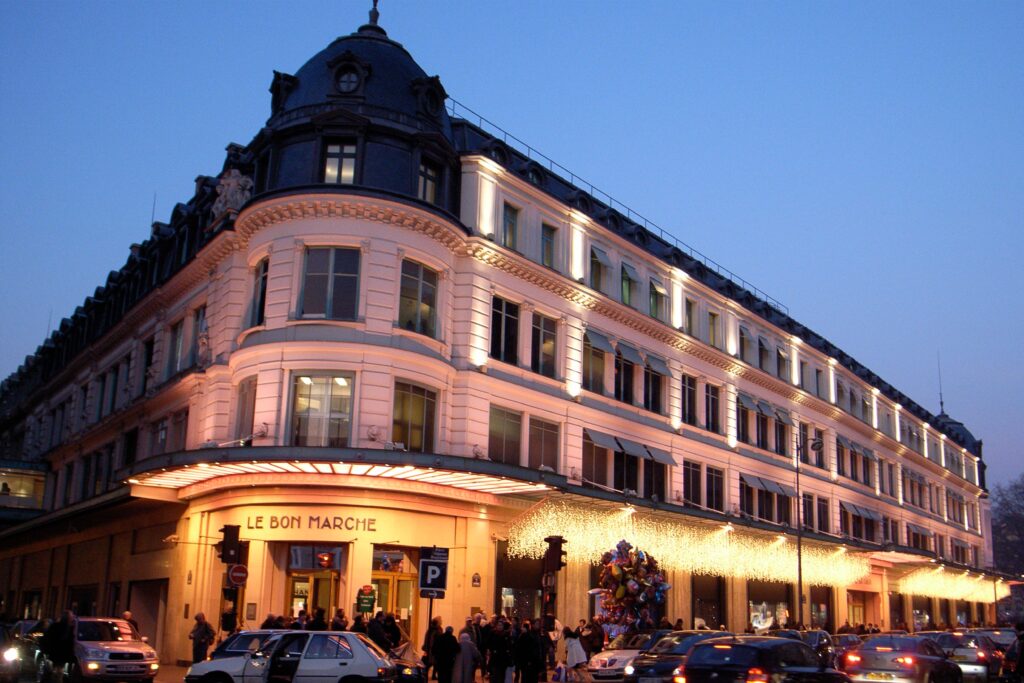
Many old-world retailers have lost their commitment to their narrative, the story that binds everything they do. In my recent work with LVMH’s Moët Hennessy, preparing a Master Plan for one of the group’s premier Maison Brand Homes in the Champagne region countryside and a winery in Napa Valley, California; we walked the sites not just with an architect’s eyes, but with the sensitivity of a storyteller.
The rich history of the buildings, landscape, the light, the sounds, smells, and the wind — everything has a voice. If you listen and look carefully at the customer, the site, and the buildings, they tell you what to do.
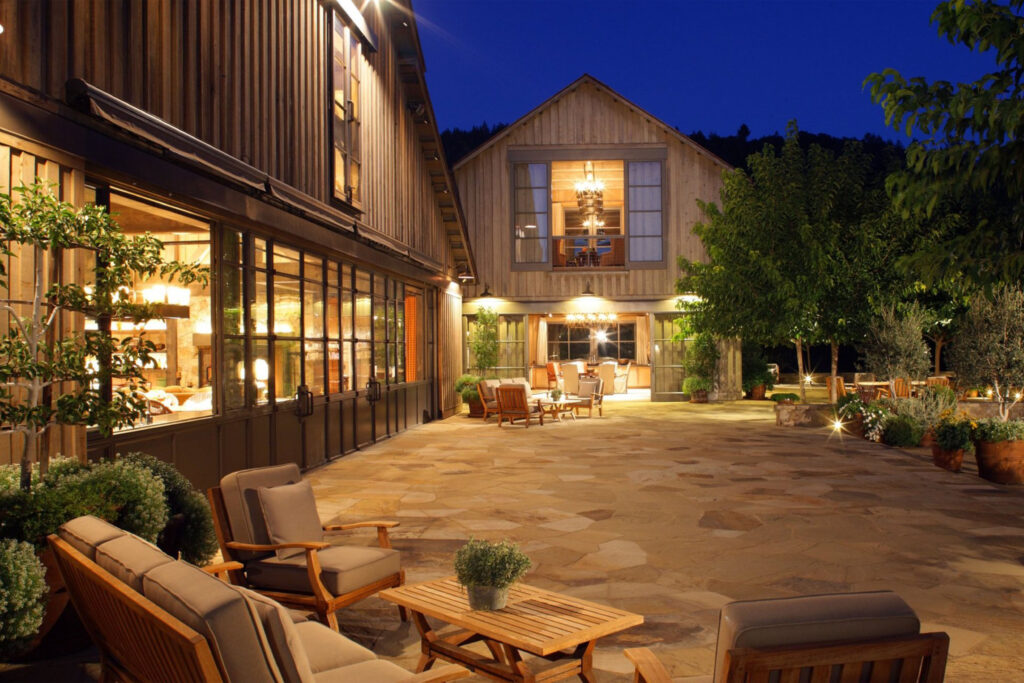
The traditional retail industry’s preoccupation with sales per square foot overlooks a more meaningful metric: share of time — the true currency of engagement. If people are not eating, sleeping, or working, they are likely investing their time in experiences.
This has become retail’s new playing field: not simply selling goods, but capturing minutes, hours, even days by evoking emotions that turn into lasting memories.
The way to grow this share of time — and ultimately extend it into share of mind and share of wallet — lies in identifying the elusive formula of relevance and meaning. This does not reside in a product or object alone, but in the narrative and the experience it enables. It is about transforming the physical store into a place of social relevance, where newness is continually unfolding.
At Le Bon Marché, newness is woven directly into the cultural calendar. In 2018, when the team sought to capture the laid-back spirit of Los Angeles, they built a three-story skate ramp in the atrium, anchoring a series of exhibitions and products around the city’s skate culture. It was not a promotional gimmick; it was a curated cultural moment.
Decades earlier, Neiman Marcus pioneered this idea under Stanley Marcus, launching two-week immersive “Fortnights” that brought evolving global cultural references into each store. These were not just retail events, but cultural activations that built attraction, loyalty, and relationships far beyond the transactional.
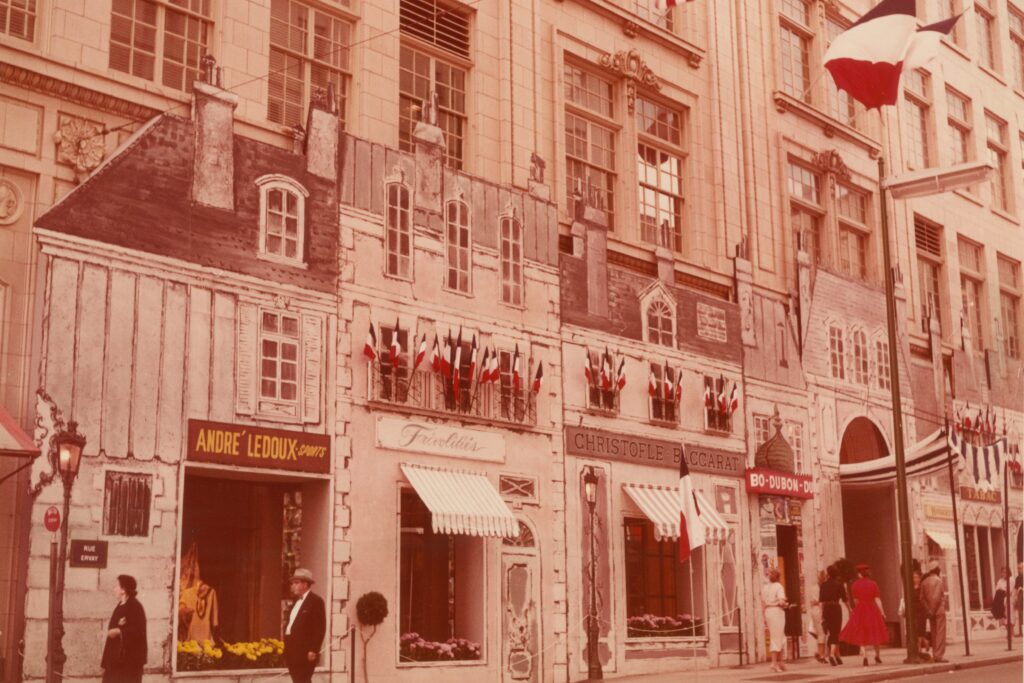
Today, Restoration Hardware offers a masterclass in this evolution. CEO Gary Friedman has stretched the brand beyond conventional retail — building multi-level mansions as showrooms, opening restaurants and hotels, even launching a private jet and yacht for members. Through continually creating high calibre and highly relevant surprises, Friedman has gradually built a cultural universe around the brand — one that has made Restoration Hardware one of the most admired lifestyle brands in the world.
Maintaining this kind of relevance and newness is not a seasonal promotion. It is an operating strategy.
The imperative is to keep the store physically compelling and programmatically alive — to bring people something they have not seen, felt, or thought about elsewhere. That is the foundation of share of mind — and ultimately, share of wallet.
Amid the excitement around “experience,” we must not fall into the trap of meaningless design spectacles. True excellence is driven into every detail as a set of non-negotiable standards and executed with operational excellence; no detail is too small.
Transactions should be seamless. Fitting rooms should feel like personal sanctuaries. Cleanliness, sightlines, lighting, temperature, scent, music, world — class storytelling, and visual merchandising — these are not afterthoughts. They are a store’s unique handwriting.
Trained service and staff must be instilled in the art of anticipation. While costly, this is beyond what is expected. It is a fundamental necessity.
Retailers often ask if such gestures “convert.” But that is the wrong question. The right question is: Did it matter? Did it connect? Did it build a reason to return?
The Four Seasons model offers a powerful parallel for exceptional retail. Each hotel reflects its setting — mountains in Chiang Mai, savannahs in Kenya, and beaches in St. Barts — while religiously maintaining standards that establish trust and exceed expectations on every visit. Staff are trained in the art of anticipation, not just service. It is this combination of consistency and surprise that builds love, brands, and trust.
Too few retailers operate this way. But those who do — Hermès, Apple, Restoration Hardware, Le Bon Marché, the new Tiffany — are not just surviving. They are leading because they understand that experience is not a campaign. It is a culture.
An iconic architect once said, “It takes a great client to do great work.” The consulting industry can only take a client so far, borrowing from an abundance of experts who expound upon and replay what’s new, who is doing what, why it matters, and how their thought leadership positions are the best and brightest.
The role of the business strategist, retail and merchant consultant, designer, and architect is critically important as a retailer’s toolbox, facilitating the exploration and creation of uncompromising, discerning solutions that can be considered and implemented. But ultimately, it requires an inspired leadership team, ownership, a board of directors and developers to lead with a viable vision and a conviction to innovate in creating, regaining, and maintaining relevance.
Courage is not a cliché. Informed and inspired leadership is not a nice-to-have, it is a requirement to survive.

The Future of Experience
The Sybarite Report 2025/26
"*" indicates required fields
